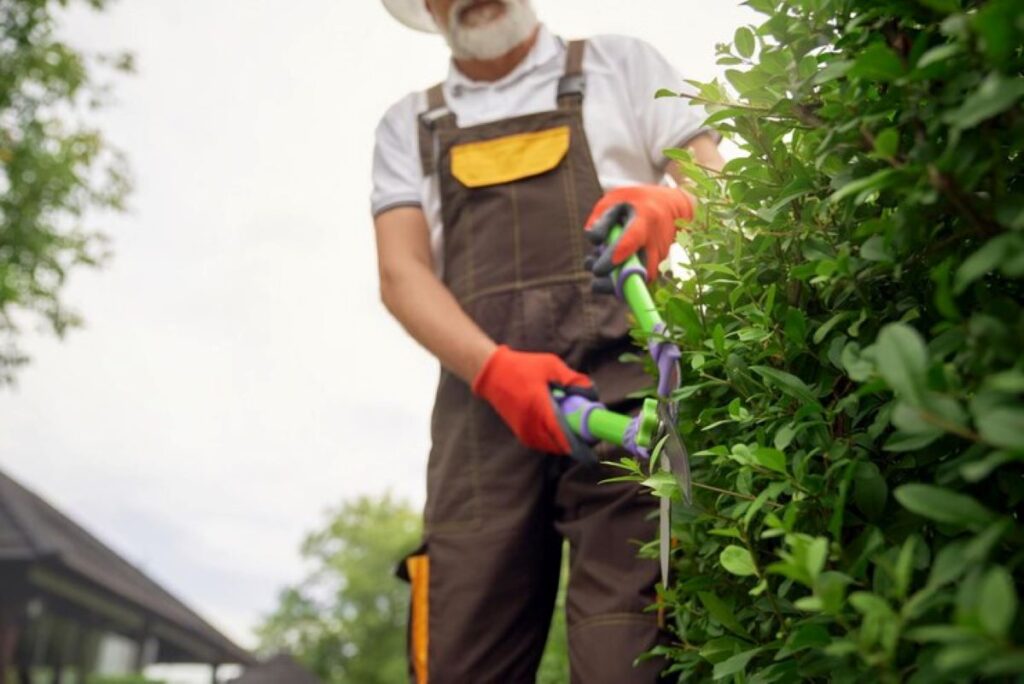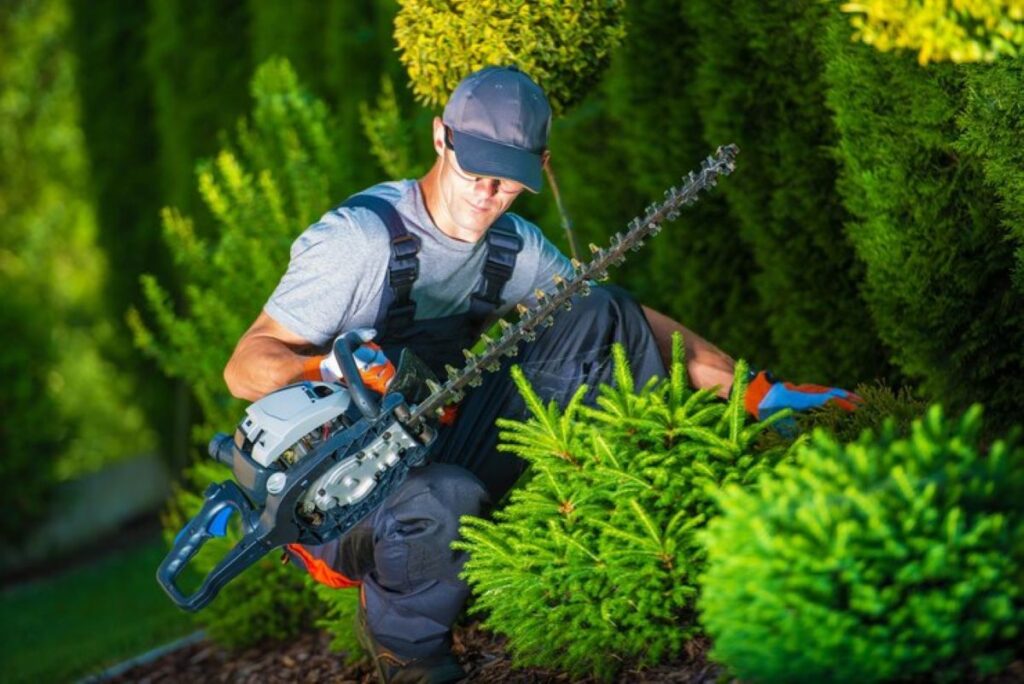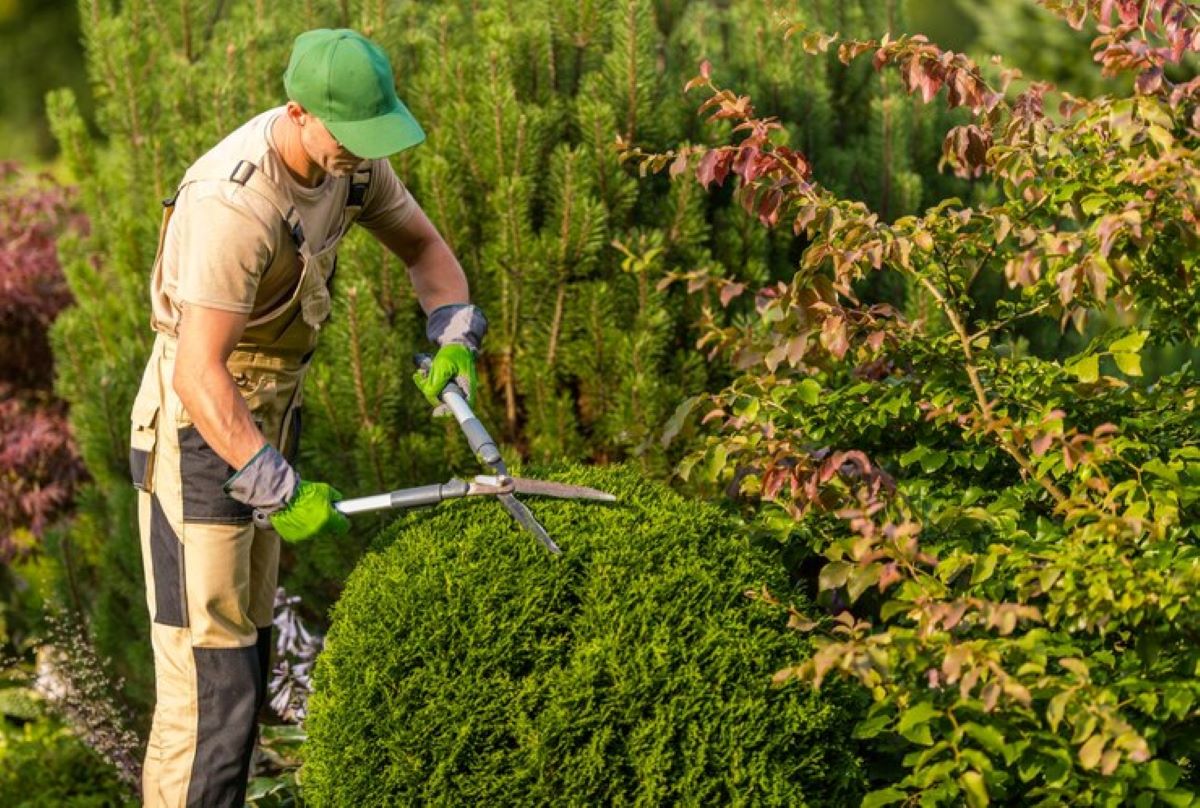Maintaining hedges on your property goes beyond simply enhancing its appearance. Regular hedge maintenance offers a range of benefits that extend to both the aesthetics and functionality of your outdoor space. By understanding the importance of hedge upkeep and implementing a proactive approach, you can maximize the advantages that hedges provide.
Understanding the Importance of Hedge Maintenance
Hedges have long been regarded as an essential landscaping element, adding a touch of elegance and charm to any property. However, their impact goes beyond mere aesthetics. Regular hedge maintenance helps to enhance property aesthetics and serves a vital role in ensuring property security.
When it comes to hedge maintenance, it’s not just about trimming and shaping them for visual appeal. Proper care also involves monitoring for any signs of disease or pest infestations. By inspecting your hedges regularly, you can address issues promptly and prevent them from spreading to other plants in your garden. This proactive approach not only preserves the health of your hedges but also contributes to the overall well-being of your landscaping.
Enhancing Property Aesthetics with Regular Hedge Maintenance
Well-maintained hedges lend a sense of structure and elegance to your landscape. They can create a natural boundary, offering privacy and defining your property’s boundaries. By trimming and shaping them regularly, you can achieve a visually appealing and manicured look that adds value to your property.
Moreover, hedges come in various species, each with its unique characteristics. By selecting the right type of hedge for your property and maintaining it properly, you can enhance the overall design and theme of your landscape. Whether you prefer a formal and symmetrical look or a more natural and free-flowing style, hedges can be tailored to suit your aesthetic preferences.
The Role of Hedges in Property Security
In addition to their visual appeal, hedges provide an added layer of security to your property. Their dense foliage acts as a deterrent, making it more challenging for unwanted intruders to access your premises. By keeping your hedges well-maintained in terms of height and thickness, you can bolster the security of your property.
Furthermore, hedges can also serve as habitats for beneficial wildlife such as birds and insects. By maintaining a healthy and diverse hedge ecosystem, you create a welcoming environment for these creatures, promoting biodiversity in your garden. This harmonious coexistence not only enriches the natural ecosystem but also adds a dynamic element to your landscaping, making it more vibrant and lively.
The Science Behind Hedge Growth and Health
Understanding the scientific aspects of hedge growth and health is essential in implementing effective maintenance practices. By recognizing the impact of regular trimming and considering the significance of seasonal care, you can optimize the vitality of your hedges.
When it comes to hedge growth, various factors come into play. Sunlight exposure, soil quality, and water availability all influence the rate at which hedges grow. Sunlight is crucial for photosynthesis, the process by which plants convert light energy into chemical energy, fueling their growth. Additionally, soil rich in nutrients provides hedges with essential minerals and vitamins necessary for their development. Adequate water supply ensures proper hydration and nutrient absorption, contributing to healthy hedge growth.
The Impact of Regular Trimming on Hedge Health
Regular trimming plays a crucial role in maintaining hedge health. Trimming promotes new growth, stimulates branching, and helps to prevent disease and pest infestation. By removing dead or diseased branches regularly, you can help your hedges thrive and remain vibrant.
Furthermore, the act of trimming stimulates the production of auxins, a group of plant hormones responsible for cell elongation and growth. This hormonal response to trimming encourages lateral bud development, resulting in denser and more robust hedge structures. Trimming also enhances air circulation within the hedge, reducing the risk of fungal infections and promoting overall health.
The Importance of Seasonal Hedge Care
Hedge care needs to be tailored to different seasons. Understanding the specific needs of your hedges during different times of the year is fundamental in ensuring their longevity. From pruning in the dormant season to preventing damage during extreme weather conditions, seasonal care is a vital aspect of hedge maintenance.
During the dormant season, hedges undergo a period of reduced metabolic activity, making it an ideal time for pruning. Trimming during this period minimizes stress on the plant and encourages vigorous regrowth in the following growing season. In contrast, during hot summer months, hedges may require increased watering to cope with high temperatures and prevent dehydration. Adjusting care practices according to seasonal variations is key to promoting optimal hedge health throughout the year.
Practical Tips for Regular Hedge Maintenance
When it comes to maintaining hedges, having the right tools and following a well-planned schedule is crucial. The success of your hedge maintenance routine depends on carefully selecting the appropriate tools and knowing when to perform specific tasks.
Proper hedge maintenance not only enhances the aesthetic appeal of your outdoor space but also promotes the health and growth of your plants. Regular trimming and pruning help maintain the desired shape of your hedges and encourage new growth. Additionally, well-maintained hedges act as a natural barrier, providing privacy and security for your property.
Choosing the Right Tools for Hedge Maintenance
Investing in quality gardening tools is essential for efficient hedge maintenance. Ensure you have hedge trimmers, pruning shears, and protective gear. By using the right tools, you can achieve precise cuts and minimize damage to your hedges.
When selecting hedge trimmers, consider the size and type of hedges you have. Electric trimmers are suitable for small to medium-sized hedges, while gas-powered trimmers are more powerful and ideal for larger hedges. Sharp pruning shears are essential for cutting through thick branches with ease, promoting healthy regrowth.

Scheduling Your Hedge Maintenance: A Seasonal Guide
Creating a schedule for your hedge maintenance ensures that you provide consistent care throughout the year. Consider factors such as growth rate, pruning requirements, and weather conditions to determine the ideal timing for different maintenance tasks.
Spring is a crucial time for hedge maintenance, as it marks the beginning of the growing season. During this time, focus on shaping your hedges and removing any dead or damaged branches. Summer maintenance involves regular trimming to control growth and maintain the desired size and shape. In autumn, prepare your hedges for the winter months by giving them a final trim and clearing debris to prevent disease and pest infestations. Click here to get more about professional hedge trimming services and why they matter.
The Economic Impact of Hedge Maintenance
Maintaining your hedges not only enhances your property’s value but also contributes to long-term financial savings. By nurturing healthy hedges, you can enjoy the economic advantages they bring.
Investing time and effort into the upkeep of your hedges goes beyond just aesthetics; it can have a tangible impact on your financial well-being. Well-maintained hedges not only add to the visual appeal of your property but also serve as a natural form of insulation, helping to regulate temperature and reduce energy costs.
Boosting Property Value with Well-Maintained Hedges
Well-maintained hedges significantly boost the curb appeal of your property, making it more attractive to prospective buyers. Strategically placed and beautifully trimmed hedges can increase your property’s value while making it stand out in the real estate market.
Furthermore, hedges act as a sound barrier, providing privacy and reducing noise pollution, which can be appealing to potential buyers looking for a peaceful and serene environment. This added benefit can further elevate the desirability and value of your property in the competitive real estate landscape.
Hedge Maintenance and Long-Term Financial Savings
Proactive hedge maintenance helps to prevent issues such as overgrowth and diseases that could result in costly repairs or replacement. Regular trimming and care can save you from expensive future expenses, ensuring that your hedges remain healthy and vibrant for years to come.
Additionally, well-manicured hedges can act as a natural deterrent for pests and intruders, reducing the risk of damage to your property and potential security expenses. By investing in the maintenance of your hedges, you are not only enhancing the beauty of your surroundings but also fortifying your property against unforeseen financial burdens.
Environmental Benefits of Regular Hedge Maintenance
Aside from the visual and financial advantages, maintaining your hedges provides numerous environmental benefits. The unique relationship between hedges and local wildlife, as well as their contribution to air quality improvement, highlights the ecological importance of proper hedge care.
When you take the time to trim and shape your hedges regularly, you are not just enhancing the aesthetic appeal of your property; you are also creating a thriving ecosystem that supports a diverse range of wildlife. From nesting birds to pollinating insects, hedges offer a safe haven for many species to thrive and contribute to the overall health of the environment.
Hedges and Local Wildlife: A Symbiotic Relationship
Hedges serve as essential habitats and sources of food for many local wildlife species. By maintaining hedges, you provide shelter and sustenance for birds, insects, and small mammals. This symbiotic relationship not only supports local biodiversity but also creates a harmonious ecosystem within your property.
Furthermore, well-maintained hedges act as wildlife corridors, allowing animals to move freely between different habitats. This connectivity is crucial for maintaining healthy populations and genetic diversity among various species, ultimately fostering a balanced and resilient ecosystem.

How Hedges Contribute to Air Quality Improvement
Hedges play a prominent role in improving air quality. As living barriers, they act as natural filters, reducing pollution and absorbing harmful gases. Through their process of photosynthesis, hedges release oxygen and contribute to cleaner and fresher air in your surroundings.
Moreover, the dense foliage of hedges helps trap dust particles and particulate matter, preventing them from being airborne and reducing respiratory health risks for you and your community. By investing in the maintenance of your hedges, you are not just beautifying your landscape but also actively participating in the preservation of a healthier environment for all living beings.
Conclusion
In conclusion, regular hedge maintenance provides numerous benefits that go well beyond the aesthetic appeal. Proper care enhances property aesthetics, improves security, and contributes to the overall well-being of your outdoor space. By understanding the science behind hedge growth and implementing practical tips for maintenance, you can harness the economic and environmental advantages that come with well-maintained hedges. So, invest your time and effort in regular hedge care, and reap the rewards for your property and the environment.


